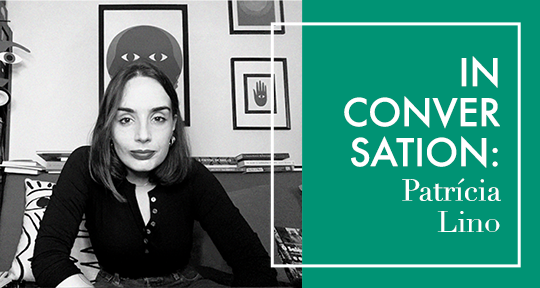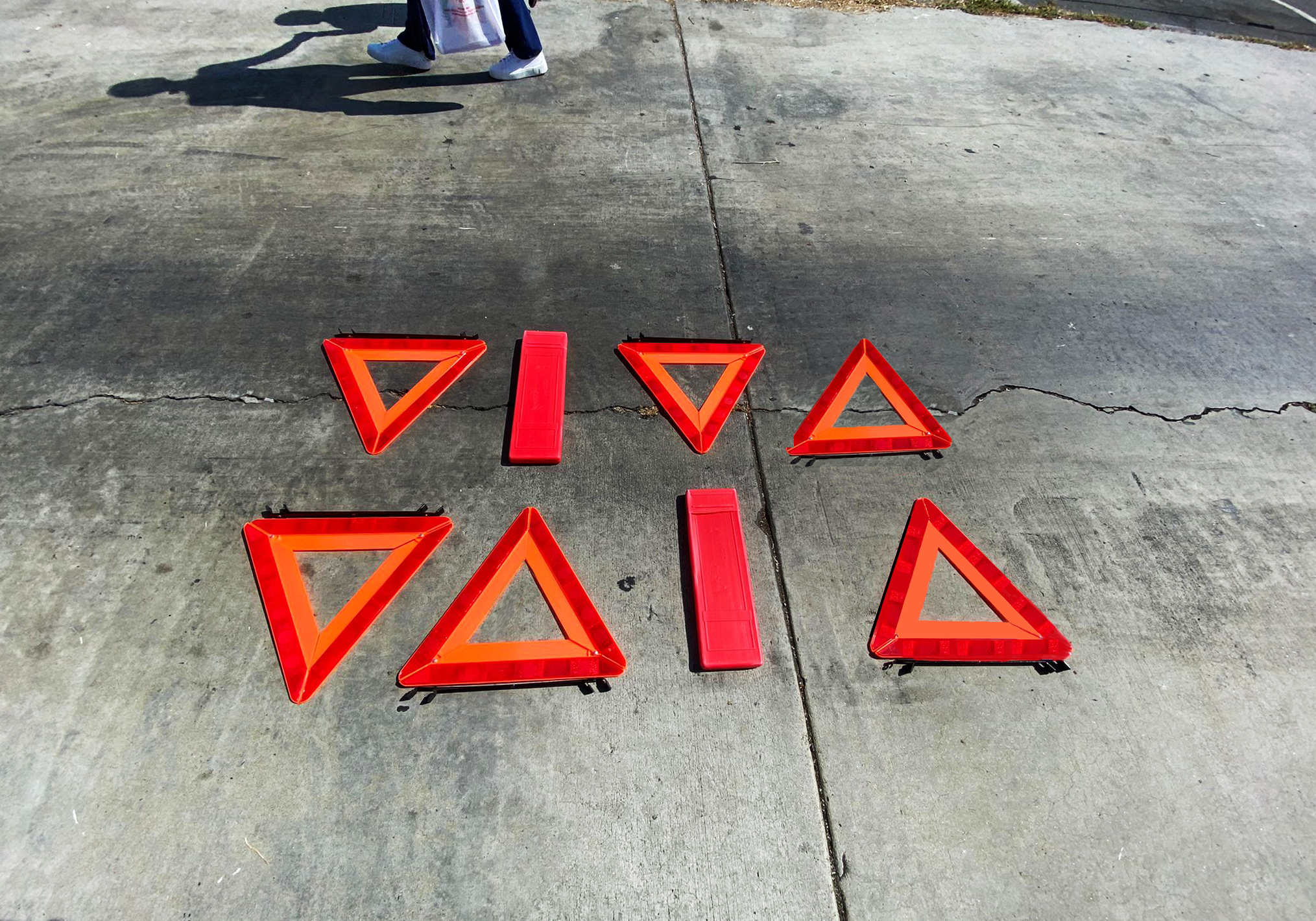In this whirlwind and evocative interview, Asymptote contributor Alan Mendoza Sosa sits down with poet and professor Patrícia Lino to discuss just one of her many innovative approaches to poetry critique and response, the “infraleitura.” Based in expanded poetry, in which the word is not the ultimate form of expression, the “infraleitura” bypasses text to reach a visual, sonic, and tactile dialogue between poetic works as well as between poets. The “infraleitura” is ultimately a work of community; here, we are brought into the dialogue with a call to—in Lino’s words—“use it and transform it endlessly.”
Alan Mendoza Sosa (AMS): Could you tell our readers who are unfamiliar with expanded poetry what it is?
Patrícia Lino (PL): On the one hand, the association of the terms “poetry” and “expanded” is paradoxical. Poetry, since its beginnings, has always been expanded and has been linked to the idea of making something both corporally and intermedially. On the other hand, the association between “poetry” and “expanded” contradicts the logocentric and occidental tendency of modern poetry and reminds us, at the same time, of the importance and validity of the plural, unoriginal, and infinite qualities and possibilities of the poem, which, in addition to being verbal, can be visual, audiovisual, three-dimensional, performative, interactive, olfactory, gustative, or cinematographically conceived—as is the case for the poem in comics. In other words, the expanded poem is a composition contrary to the hierarchy of expressions, in which the word traditionally (and colonially) occupies the top, and image, sound, or gesture are relegated to, respectively, second, third, and fourth places.
AMS: You coined the term “infraleitura”; what does it mean and how does it relate to expanded poetry?
PL: The analytical tools of traditional literary criticism, which developed in the context of the aforementioned logocentric inclination, do not, by focusing primarily on the word, account for the various dimensions and materials of the expanded poem. The “infraleitura” arises, against interpretation, to respond to the absence of a bodily and decolonial way of reading poetry. It could be defined as an-impossible-to-define form of intermedial and creative essay, in which, as well as the poet’s body that expands to make the poem, the essayist’s body expands itself to understand. This other method of comprehension considers not only the word, but also any other useful means to grasp the poem in analysis. It is about reading with the whole body.
The term “infraleitura” is the result of putting together the Greek prefix, -infra (to go under), and the word “leitura” (reading). That is to say, a reading that infiltrates itself under the poem to startle (“espantar”[1]) the essay’s reader, viewer, or listener. And why startling intentionally, the reader? I argue that, to be validated in academia, the “infraleitura” should startle the audience with the sole purpose of transporting them to a pre-poetic space of silence—where all expressions and materials co-exist and are at their disposal. Silence is, furthermore, non-verbal.
Therefore, the “infraleitura” must be based on the following assumption: the quality of astonishment defines the quality and convenience of the “infraleitura.”
On top of that, the “infraleitura” must be irreplaceable: the traditional academic essay will never be able to say so clearly what the “infraleitura” does not say.
Let us take for example the poem “Amor” by Oswald de Andrade. “Amor” opens the widely-known Primeiro Caderno do Alumno de Poesia Oswald de Andrade, both written and drawn by Oswald in 1927.
AMOR
humor
The first most complete article on “Amor” was published by Antonio Sergio Lima Mendonça and Álvaro de Sá in 1983[2]. Supported by the disyllabic morphology of the set, Mendonça and Sá begin by pointing out that “the components of the binomial amor-humor (love-humor) will dismantle the expectations propagated by the romantic metaphor” of traditional poetry.
The possibility of the aspirated h falling, occasioned by the phonetic similarity between amor-(h)umor, allows us to place “amor” and “umor” on the same plane, and constitutes the first major step in this metonymic exercise of demystification. By bringing “love” and “humor” together, the reader settles upon “rumor,” the third element of the composition. Beginning with “r” which, in the “romantic conception,” “made the poem ugly,” “rumor” synthetically suggests, from what remains of the difference of the binomial, the dismantling of the traditional and symmetrical structure of romantic or courtly love, extending, thus, to Primeiro Caderno the idea of a rough and savage love whose rudeness already permeated “Secretário dos amantes” in Pau Brasil (“Kisses and kicks of love”[3]).

PATRÍCIA LINO. AMOR, HUMOR e RUMOR.
Based on LIMA MENDONÇA & ÁLVARO DE SÁ (1983).
There is, however, one detail that seems to go unnoticed. As with all the poems in Primeiro Caderno, Oswald also includes, alongside the text, a drawing.
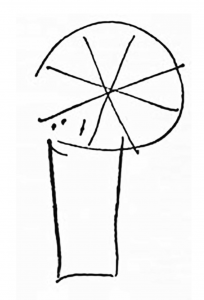
OSWALD DE ANDRADE. PRIMEIRO CADERNO DO ALUMNO DE POESIA OSWALD DE ANDRADE. 1927.
This at least enigmatic drawing “(a mushroom? A tree? A ferris wheel?),”[4] as unfinished as it is vague, in which Rudá de Andrade sees a cannon[5], resembles, for me, an inverted bicycle wheel. This, in turn, reminds me of Marcel Duchamp’s first readymade piece, Bicycle Wheel (1917), and expands precisely, if we imagine a bicycle wheel rotating uninterruptedly, the imaginary movement of the circular propagation of “rumor.”
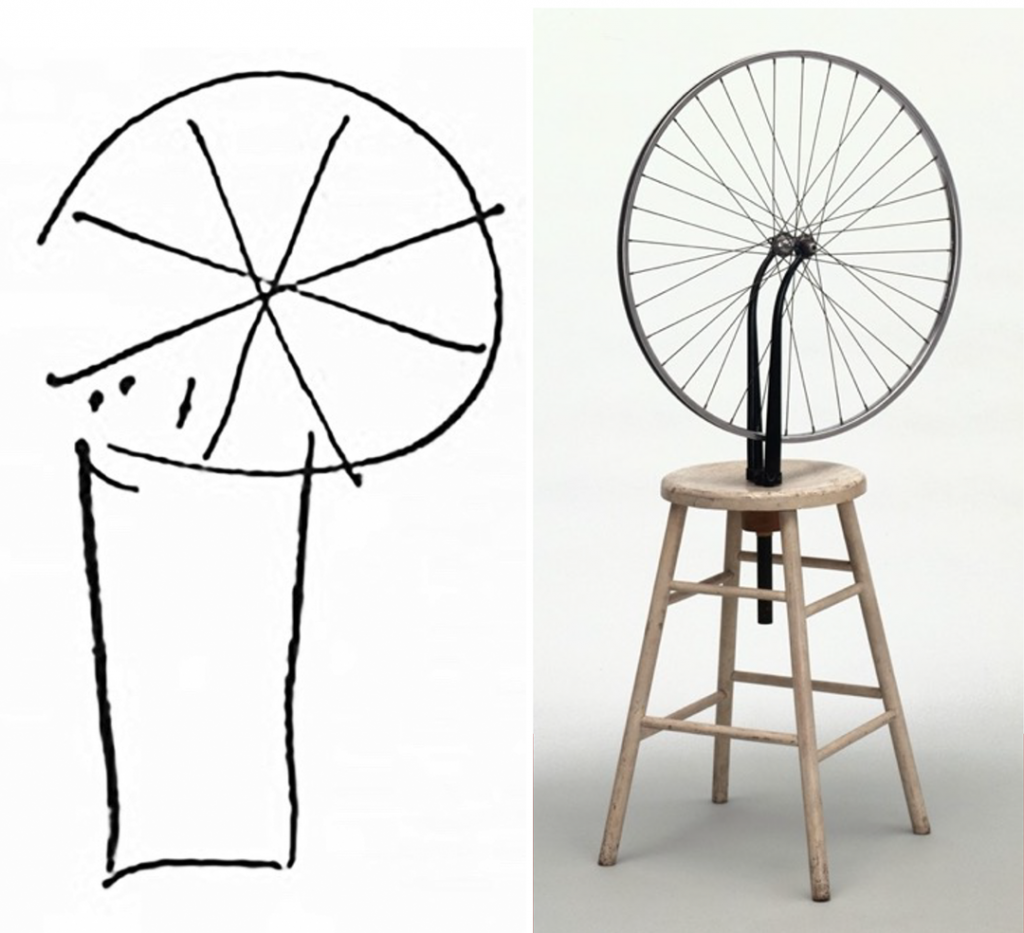
(left) OSWALD DE ANDRADE. PRIMEIRO CADERNO DO ALUMNO DE POESIA OSWALD DE ANDRADE. 1927.
(right) MARCEL DUCHAMP. BICYCLE WHEEL. 1917.
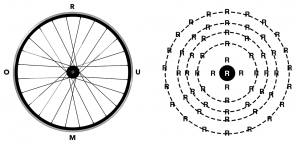
PATRÍCIA LINO. VISUAL PROXIMITY BETWEEN AMOR AND BICYCLE WHEEL.
The association between Oswald and Duchamp is not surprising because, after all, Oswald had been doing verbal-readymade exercises since the publication of Pau Brasil in 1925. But it considerably amplifies our understanding of such a verbally condensed poem. Just as he symbolically appropriates “Love” (= the Western literary tradition about to be subverted), Oswald metonymically appropriates one of the parts of the bicycle (= familiar object about to be re-signified).
The re-signification of the drawing precedes, to put it simply, the re-signification of the concept.
PATRÍCIA LINO. INFRALEITURA FOR AMOR (1927) BY OSWALD DE ANDRADE. EXCERPT.
AMS: What is the story behind your concept?
PL: The “infraleitura” is obviously as practical as it is performative, and it effectively began in my classes on poetry as well as in the performative practice of the academic conference.
Despite not having a concept formed up until 2020, I have been making “infraleituras” of several poems by various Brazilian and Portuguese authors for many years.
From illustrating poems and conducting illustration workshops on poetry throughout the United States, Brazil, Mexico, Colombia, and Portugal to performing a well-humored critique to academic logocentrism, from conceiving class activities in which students can create visual, musical, and performative readings of the analyzed texts to deciphering poems in academic presentations using diagrams, videos, and art installations, I learned—distancing myself, as much as possible, from a more individualistic and conceited perception of authorship—that the “infraleitura” only makes sense when shared and discussed within a community.
I want others to use it and transform it endlessly.
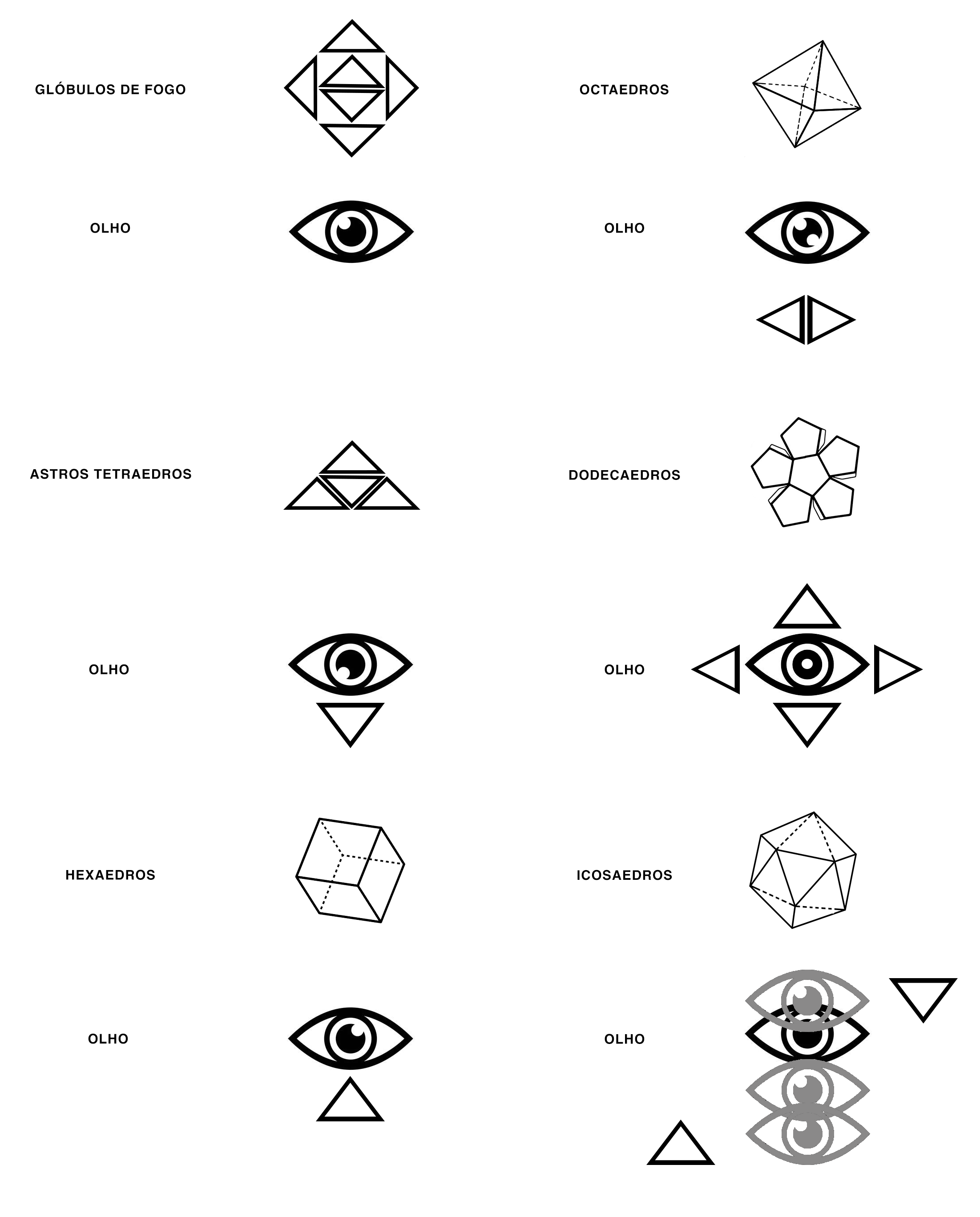
PATRÍCIA LINO. DIAGRAM. BASED ON THE RELATION BETWEEN LUÍS ARANHA AND POEMA-OLHO—A TERM COINED BY LINO TO DESCRIBE THE POETIC ADAPTION OF DZIGA VERTOV’S KINO-EYE.
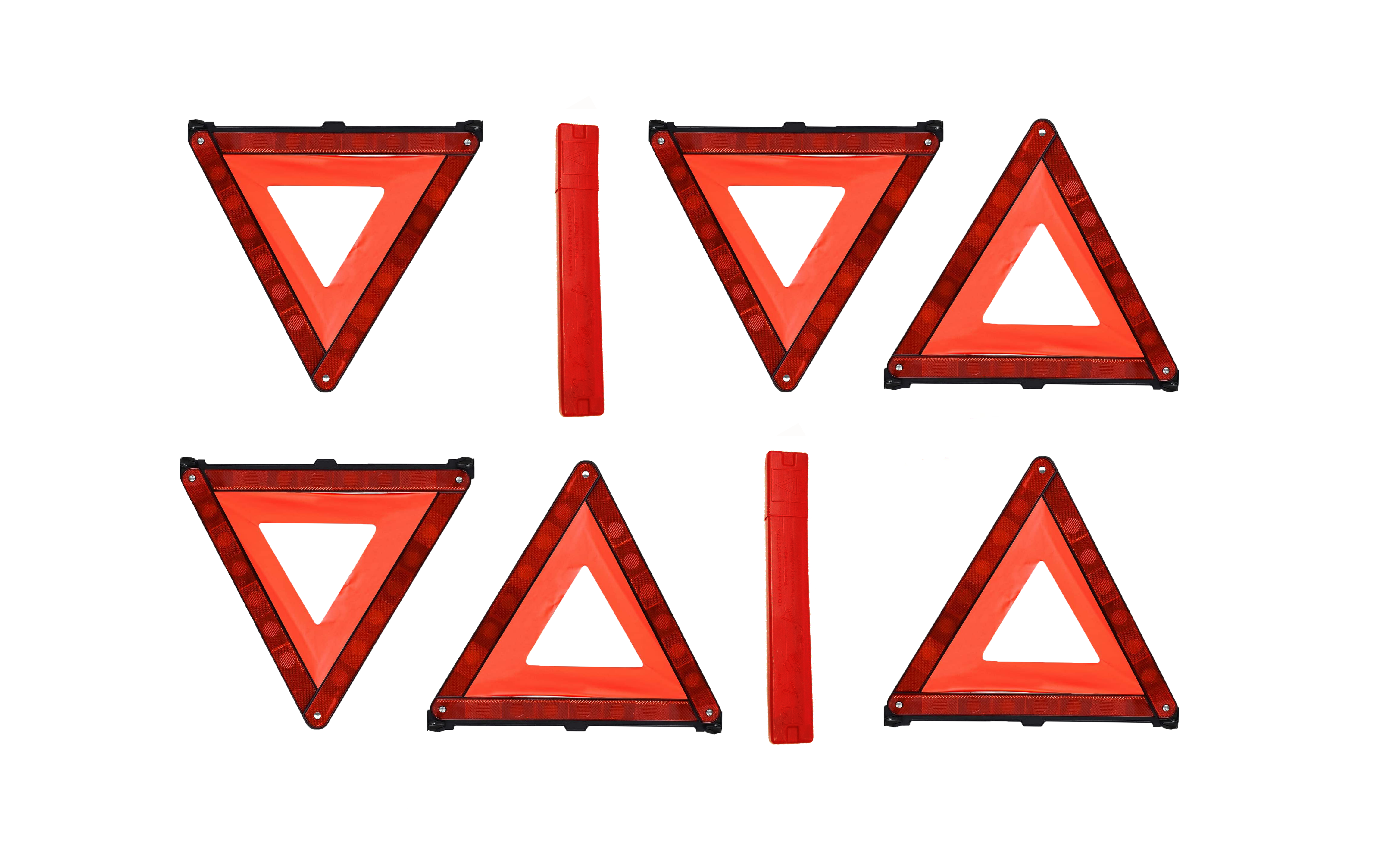
PATRÍCIA LINO. ART INSTALLATION. LOS ANGELES. 2021.
RECREATION OF VIVA VAIA (1972) BY AUGUSTO DE CAMPOS USING WARNING TRIANGLES.
PATRÍCIA LINO. INFRALEITURA FOR ODI ET AMO (2006) BY AUGUSTO DE CAMPOS. EXCERPT.
AMS: When and how did you become interested in expanded poetry?
PL: I got to read Ana Hatherly and Campos brothers for the first time when I was seventeen years old. At nineteen, I organized an exhibition on Brazilian and Portuguese visual poetry at the Faculdade de Letras da Universidade do Porto. Poesia Concreta. Vinte Passos para o Verbivocovisual involved the recreation of each visual poem included in the catalog. Among the authors of the poems I recreated were the already mentioned Hatherly and Campos brothers, as well as Alexandre O’Neill, Salette Tavares, Décio Pignatari, Ronaldo Azeredo, and Alberto Pimenta.
Encountering these authors not only allowed me to later know other names, such as Eugen Gomringer and Mary Ellen Solt, but also validated through a feeling of identification my expanded way of thinking, expressing, and existing. I was not by myself anymore.
AMS: When is your next book coming out and what is it about?
PL: Other than a book of poems about maps to be released by the Brazilian publisher Círculo de Poemas and an intermedial book called Variações sobre a Saudade, the essay Imperativa Ensaística Diabólica. Infraleituras da Poesia Expandida Brasileira will also be published this year by Relicário Edições. Imperativa Ensaística Diabólica is, at the same time, a material and digital book.
While its printed section contains the verbal part of the essay itself, the digital section complements it audiovisually. The two depend exclusively on each other.
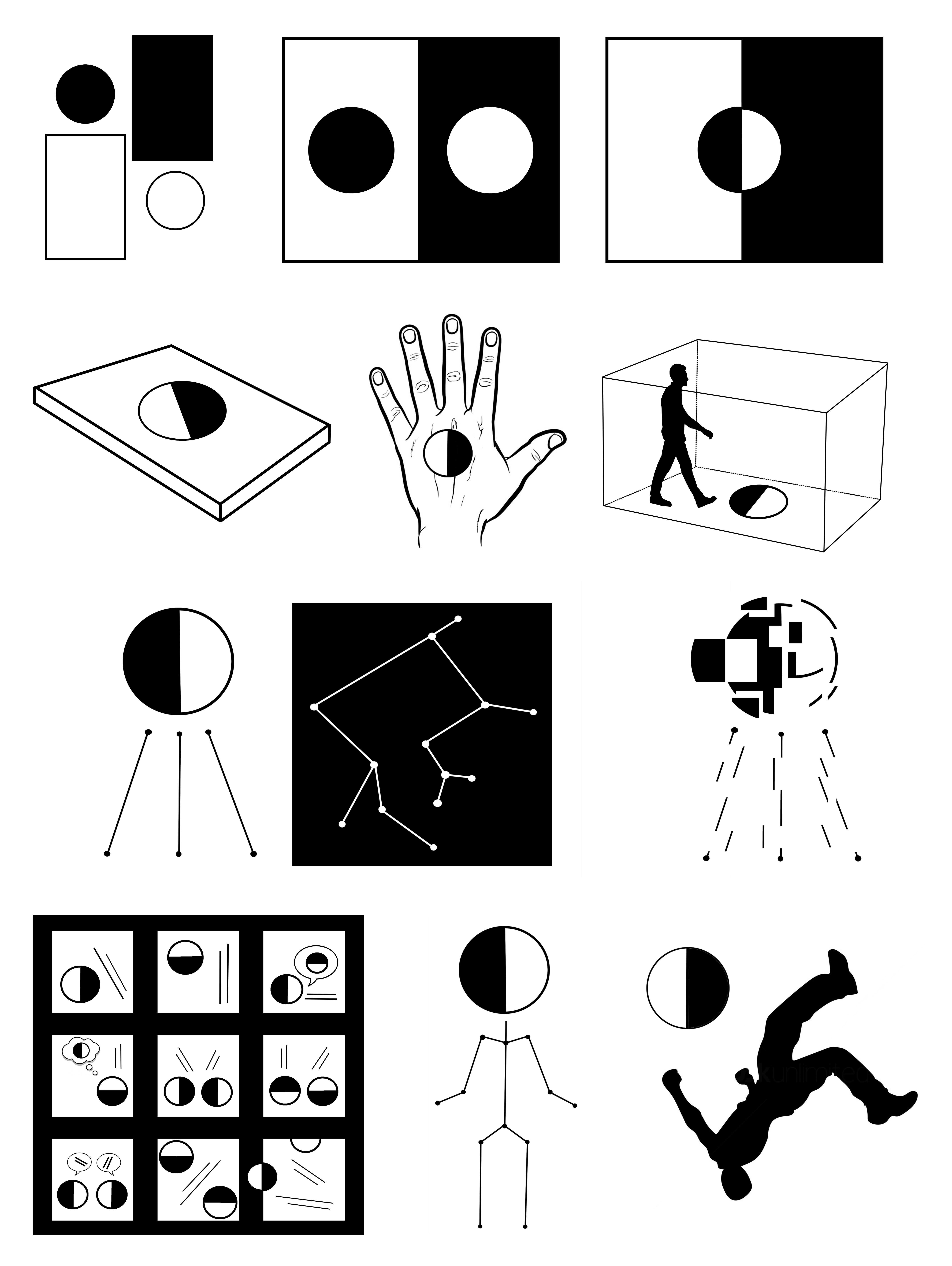
PATRÍCIA LINO. IMPERATIVA ENSAÍSTICA DIABÓLICA. INFRALEITURAS DA POESIA EXPANDIDA BRASILEIRA. TABLE OF CONTENTS. EXCERPT.
In addition to introducing the concept of “infraleitura,” Imperativa Ensaística Diabólica simultaneously seeks to understand a) how Brazilian poetry of the 20th century became more and more intermedial over time; b) the coincidence between intermediality and anthropophagic practices in the development of the Brazilian avant-garde literary work; and, finally c) how to rehabilitate both the hybrid status of certain canonical literary works and works forgotten or ostracized by critics.
The selected infraread authors of this book are Luís Aranha, Oswald de Andrade and Tarsila do Amaral, Jorge de Lima, Pagu, Julieta Barbara, Augusto de Campos, Décio Pignatari, Lygia Clark, Ferreira Gullar, Osmar Dillon, Wlademir Dias-Pino, Álvaro and Neide de Sá, and Eduardo Kac.
[1] I am also making use of the semantical tension that exists between the meaning of “espanto” in both Portuguese (positive) and Spanish (negative).
[2] Poesia de Vanguarda no Brasil: de Oswald de Andrade ao Poema Visual. Rio de Janeiro: Edições Antares, 1983, pp. 46-48.
[3] Pau-Brasil. Rio de Janeiro: Globo, 1990, p. 111.
[4] Augusto de Campos, “Oswald, livro livre,” Oswald de Andrade, Primeiro Caderno do Alumno de Poesia Oswald de Andrade. São Paulo: Companhia das Letras, 2018, p 18.
[5] “Segundo Rudá de Andrade, a posição correta do desenho seria mesmo a [horizontal] da primeira edição. Ele se recorda de um comentário de Nonê (Oswald de Andrade Filho), afirmando que a imagem representaria um canhão da guerra de 1914,” idem, p. 21. This ungainly cannon is obviously reminiscent of Serafim Ponte Grande’s domestic cannon. Cf. Oswald de Andrade, Serafim Ponte Grande. São Paulo: Globo, 1997, p. 76.
Patrícia Lino is a poet working at the intersections of the verbal, sonic, and visual. In addition to her artistic work, she has developed groundbreaking approaches to concrete and expanded poetics, coining the concept of “infraleitura.” She is currently Visiting Assistant Professor of Afro-Luso-Brazilian literatures and visual arts in the Spanish and Portuguese Department at Yale University.
Alan Mendoza Sosa holds a BA degree in Comparative Literature in English and Spanish from Brown University, and an MPhil in Latin American Cultural Studies and Comparative Literature from The University of Cambridge. He is currently a graduate student at Yale University’s PhD in Spanish and Portuguese. He is interested in Mexican and Latin American literary, film, and cultural studies; queer studies, postcolonial and decolonial theory, Latinx literature, translation, and poetry. He authored the poetry collection La bestia que habito (Herring Publishers, 2022)

